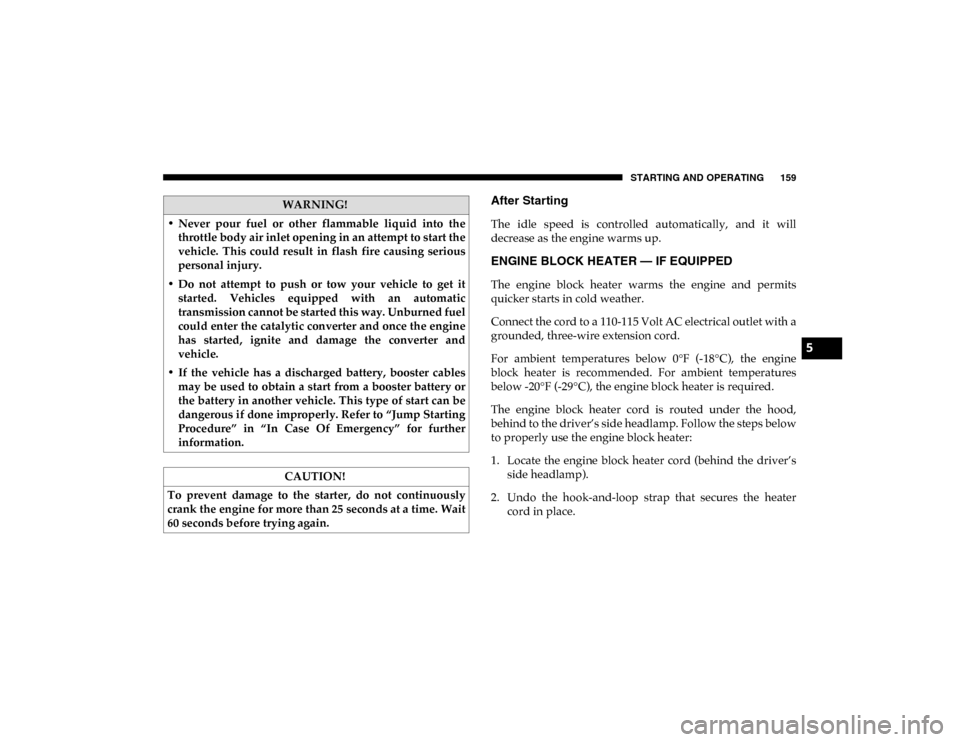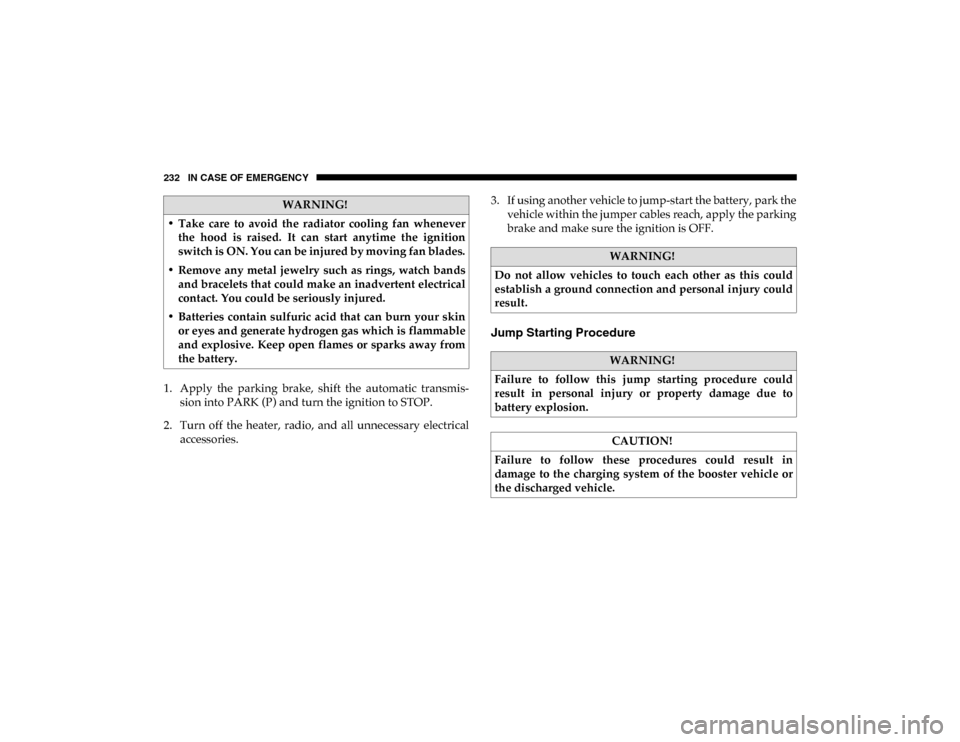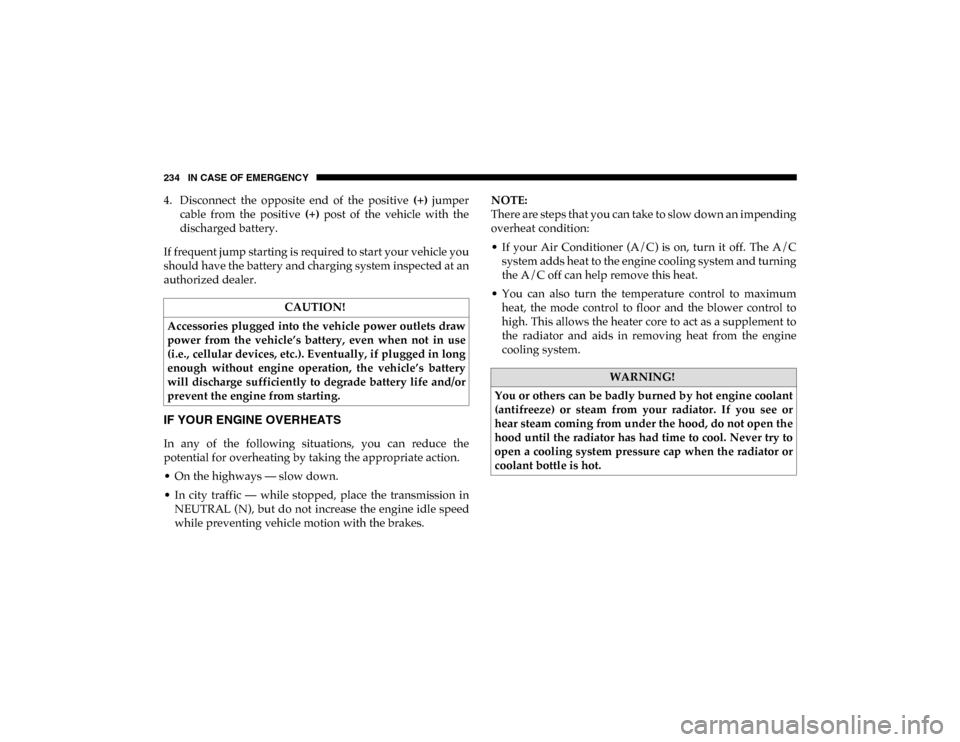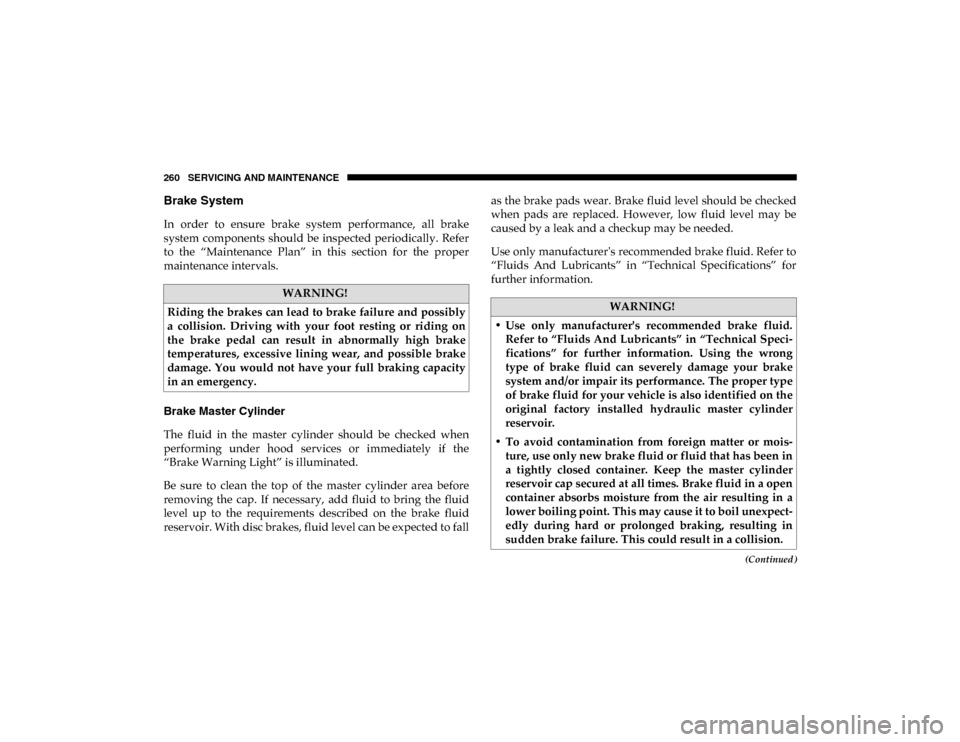hood open Ram ProMaster City 2020 Owner's Manual
[x] Cancel search | Manufacturer: RAM, Model Year: 2020, Model line: ProMaster City, Model: Ram ProMaster City 2020Pages: 350, PDF Size: 13.27 MB
Page 6 of 350

3
EXTERIOR LIGHTS .......................................................... 43
Multifunction Lever ...................................................... 43
Headlights ..................................................................... 43
Daytime Running Lights — If Equipped .................. 43
High Beams .................................................................... 44
Flash-To-Pass ................................................................ 44
Parking Lights ............................................................... 44
Follow Me Home/Headlight Delay ........................... 44
Fog Lights — If Equipped ........................................... 45
Turn Signals.................................................................... 45
Lane Change Assist ....................................................... 45
INTERIOR LIGHTS ............................................................ 46
Courtesy/Interior Lights .............................................. 46
WIPERS AND WASHERS .............................................. 50
Front Wiper Operation ................................................. 50
Rear Wiper Operation — If Equipped........................ 52
CLIMATE CONTROLS ..................................................... 53
Manual Climate Control Overview ............................ 53
Climate Control Functions ........................................... 56
Operating Tips ............................................................... 57
WINDOWS .......................................................................... 60
Power Windows — If Equipped ................................ 60
Window Bar Grates — If Equipped ............................ 63
Wind Buffeting .............................................................. 63
HOOD ...................................................................................64
Opening...........................................................................64
Closing.............................................................................65
CARGO AREA FEATURES ............................................66
Rear Cargo Tie-Downs ................................................66
INTERNAL EQUIPMENT .................................................68
Storage .............................................................................68
Cupholders ....................................................................69
Power Outlets ................................................................70
ROOF RACK — IF EQUIPPED .........................................72
GETTING TO KNOW YOUR INSTRUMENT
PANEL
INSTRUMENT CLUSTER ..................................................75
Instrument Cluster Descriptions .................................76
INSTRUMENT CLUSTER DISPLAY ...............................77
Location And Controls..................................................77
Change Engine Oil — If Equipped ...........................80
Instrument Cluster Display Menu Items....................80
TRIP COMPUTER ...............................................................82
Trip Button......................................................................82
Trip Functions ...............................................................83
Values Displayed ...........................................................83
2020_RAM_PROMASTER_CITY_OM_USA=GUID-7B6A7FCA-79B0-423F-95C5-ED2A949C3D13=1=en=.book Page 3
Page 24 of 350

GETTING TO KNOW YOUR VEHICLE 21
VEHICLE SECURITY ALARM — IF EQUIPPED
The Vehicle Security Alarm monitors the vehicle doors and
ignition for unauthorized operation. When the Vehicle Secu-
rity Alarm is activated, interior switches for door locks are
disabled. The system provides both audible and visible
signals. Every intrusion attempt causes six continuous alarm
cycles. Every alarm cycle lasts for 30 seconds. For 26 seconds,
the horn will sound, and the turn signal lights will flash. For
four seconds, it will pause. After a maximum of 10 alarm
cycles, only the turn signal lights will flash until the next
alarm activation.
To Arm The System
To arm the system, the Vehicle Security Alarm will set when
you use the key fob to lock the doors. If a door or the hood is
not properly shut, the alarm system will not be armed.
To Disarm The System
Use the key fob to unlock the door and disarm the system.
The Vehicle Security Alarm will also disarm if a
programmed Sentry Key is inserted into the ignition switch.
To exit the alarm mode, push the key fob unlock button, or
insert a programmed Sentry Key into the ignition switch.The Vehicle Security Alarm is designed to protect your
vehicle. However, you can create conditions where the
system will give you a false alarm. If one of the previously
described arming sequences has occurred, the Vehicle Secu-
rity Alarm will arm regardless of whether you are in the
vehicle or not. If you remain in the vehicle and open a door,
the alarm will sound. If this occurs, disarm the Vehicle Secu-
rity Alarm.
Rearming Of The System
If the system has not been disabled, the Vehicle Security
Alarm will rearm itself after the 15 additional minutes of
turn lamps flashing. If the condition which initiated the
alarm is still present, the system will ignore that condition
and monitor the remaining doors and ignition.
Security System Manual Override
The Vehicle Security Alarm will not arm/disarm if you lock/
unlock the doors using the manual door lock plunger.
2
2020_RAM_PROMASTER_CITY_OM_USA=GUID-7B6A7FCA-79B0-423F-95C5-ED2A949C3D13=1=en=.book Page 21
Page 67 of 350

64 GETTING TO KNOW YOUR VEHICLE
HOOD
Opening
To open the hood, two latches must be released.
1. Pull the release lever located below the instrument paneland in front of the driver's door.
Hood Release Lever 2. Move to the outside of the vehicle, reach into the opening
beneath the center of the hood and push up the safety
latch lever to release it, before raising the hood.
Hood Safety Latch Lever Location
2020_RAM_PROMASTER_CITY_OM_USA=GUID-7B6A7FCA-79B0-423F-95C5-ED2A949C3D13=1=en=.book Page 64
Page 68 of 350

GETTING TO KNOW YOUR VEHICLE 65
3. Raise the hood and place the hood prop rod in hood slotto secure the hood in the open position.
Hood Prop RodClosing
CAUTION!
Be sure to disengage the rod and secure it in close
position before closing the hood. Damage may occur.
WARNING!
Be sure the hood is fully latched before driving your
vehicle. If the hood is not fully latched, it could open
when the vehicle is in motion and block your vision.
Failure to follow this warning could result in serious
injury or death.
CAUTION!
To prevent possible damage, do not slam the hood to
close it. Lower hood to approximately 12 inches (30 cm)
and drop the hood to close. Make sure hood is fully
closed for both latches. Never drive vehicle unless hood
is fully closed, with both latches engaged.
2
2020_RAM_PROMASTER_CITY_OM_USA=GUID-7B6A7FCA-79B0-423F-95C5-ED2A949C3D13=1=en=.book Page 65
Page 162 of 350

STARTING AND OPERATING 159
After Starting
The idle speed is controlled automatically, and it will
decrease as the engine warms up.
ENGINE BLOCK HEATER — IF EQUIPPED
The engine block heater warms the engine and permits
quicker starts in cold weather.
Connect the cord to a 110-115 Volt AC electrical outlet with a
grounded, three-wire extension cord.
For ambient temperatures below 0°F (-18°C), the engine
block heater is recommended. For ambient temperatures
below -20°F (-29°C), the engine block heater is required.
The engine block heater cord is routed under the hood,
behind to the driver’s side headlamp. Follow the steps below
to properly use the engine block heater:
1. Locate the engine block heater cord (behind the driver’sside headlamp).
2. Undo the hook-and-loop strap that secures the heater cord in place.
WARNING!
• Never pour fuel or other flammable liquid into the throttle body air inlet opening in an attempt to start the
vehicle. This could result in flash fire causing serious
personal injury.
• Do not attempt to push or tow your vehicle to get it started. Vehicles equipped with an automatic
transmission cannot be started this way. Unburned fuel
could enter the catalytic converter and once the engine
has started, ignite and damage the converter and
vehicle.
• If the vehicle has a discharged battery, booster cables may be used to obtain a start from a booster battery or
the battery in another vehicle. This type of start can be
dangerous if done improperly. Refer to “Jump Starting
Procedure” in “In Case Of Emergency” for further
information.
CAUTION!
To prevent damage to the starter, do not continuously
crank the engine for more than 25 seconds at a time. Wait
60 seconds before trying again.
5
2020_RAM_PROMASTER_CITY_OM_USA=GUID-7B6A7FCA-79B0-423F-95C5-ED2A949C3D13=1=en=.book Page 159
Page 235 of 350

232 IN CASE OF EMERGENCY
1. Apply the parking brake, shift the automatic transmis-sion into PARK (P) and turn the ignition to STOP.
2. Turn off the heater, radio, and all unnecessary electrical accessories. 3. If using another vehicle to jump-start the battery, park the
vehicle within the jumper cables reach, apply the parking
brake and make sure the ignition is OFF.
Jump Starting Procedure
WARNING!
• Take care to avoid the radiator cooling fan whenever the hood is raised. It can start anytime the ignition
switch is ON. You can be injured by moving fan blades.
• Remove any metal jewelry such as rings, watch bands and bracelets that could make an inadvertent electrical
contact. You could be seriously injured.
• Batteries contain sulfuric acid that can burn your skin or eyes and generate hydrogen gas which is flammable
and explosive. Keep open flames or sparks away from
the battery.
WARNING!
Do not allow vehicles to touch each other as this could
establish a ground connection and personal injury could
result.
WARNING!
Failure to follow this jump starting procedure could
result in personal injury or property damage due to
battery explosion.
CAUTION!
Failure to follow these procedures could result in
damage to the charging system of the booster vehicle or
the discharged vehicle.
2020_RAM_PROMASTER_CITY_OM_USA=GUID-7B6A7FCA-79B0-423F-95C5-ED2A949C3D13=1=en=.book Page 232
Page 237 of 350

234 IN CASE OF EMERGENCY
4. Disconnect the opposite end of the positive (+) jumper
cable from the positive (+) post of the vehicle with the
discharged battery.
If frequent jump starting is required to start your vehicle you
should have the battery and charging system inspected at an
authorized dealer.
IF YOUR ENGINE OVERHEATS
In any of the following situations, you can reduce the
potential for overheating by taking the appropriate action.
• On the highways — slow down.
• In city traffic — while stopped, place the transmission in NEUTRAL (N), but do not increase the engine idle speed
while preventing vehicle motion with the brakes. NOTE:
There are steps that you can take to slow down an impending
overheat condition:
• If your Air Conditioner (A/C) is on, turn it off. The A/C
system adds heat to the engine cooling system and turning
the A/C off can help remove this heat.
• You can also turn the temperature control to maximum heat, the mode control to floor and the blower control to
high. This allows the heater core to act as a supplement to
the radiator and aids in removing heat from the engine
cooling system.
CAUTION!
Accessories plugged into the vehicle power outlets draw
power from the vehicle’s battery, even when not in use
(i.e., cellular devices, etc.). Eventually, if plugged in long
enough without engine operation, the vehicle’s battery
will discharge sufficiently to degrade battery life and/or
prevent the engine from starting.
WARNING!
You or others can be badly burned by hot engine coolant
(antifreeze) or steam from your radiator. If you see or
hear steam coming from under the hood, do not open the
hood until the radiator has had time to cool. Never try to
open a cooling system pressure cap when the radiator or
coolant bottle is hot.
2020_RAM_PROMASTER_CITY_OM_USA=GUID-7B6A7FCA-79B0-423F-95C5-ED2A949C3D13=1=en=.book Page 234
Page 258 of 350

SERVICING AND MAINTENANCE 255
(Continued)
To minimize the possibility of catalytic converter damage:
• Do not interrupt the ignition when the transmission is ingear and the vehicle is in motion.
• Do not try to start the vehicle by pushing or towing the vehicle.
• Do not idle the engine with any ignition components disconnected or removed, such as when diagnostic testing,
or for prolonged periods during very rough idle or
malfunctioning operating conditions.
Cooling System
Engine Coolant Checks
Check the engine coolant (antifreeze) protection every
12 months (before the onset of freezing weather, where
applicable). If the engine coolant (antifreeze) is dirty, the
system should be drained, flushed, and refilled with fresh
OAT coolant (conforming to MS.90032) by an authorized
dealer. Check the front of the A/C condenser for any accu-
mulation of bugs, leaves, etc. If dirty, clean by gently
spraying water from a garden hose vertically down the face
of the condenser.
Check the engine cooling system hoses for brittle rubber,
cracking, tears, cuts, and tightness of the connection at the
coolant recovery bottle and radiator. Inspect the entire
system for leaks. DO NOT REMOVE THE COOLANT PRES -
SURE CAP WHEN THE COOLING SYSTEM IS HOT.
WARNING!
• You or others can be badly burned by hot engine coolant (antifreeze) or steam from your radiator. If you
see or hear steam coming from under the hood, do not
open the hood until the radiator has had time to cool.
Never open a cooling system pressure cap when the
radiator or coolant bottle is hot.
• Keep hands, tools, clothing, and jewelry away from the radiator cooling fan when the hood is raised. The fan
starts automatically and may start at any time, whether
the engine is running or not.
• When working near the radiator cooling fan, discon -
nect the fan motor lead or turn the ignition to the OFF
mode. The fan is temperature controlled and can start at
any time the ignition is in the ON mode.
WARNING! (Continued)
7
2020_RAM_PROMASTER_CITY_OM_USA=GUID-7B6A7FCA-79B0-423F-95C5-ED2A949C3D13=1=en=.book Page 255
Page 263 of 350

260 SERVICING AND MAINTENANCE
(Continued)
Brake System
In order to ensure brake system performance, all brake
system components should be inspected periodically. Refer
to the “Maintenance Plan” in this section for the proper
maintenance intervals.
Brake Master Cylinder
The fluid in the master cylinder should be checked when
performing under hood services or immediately if the
“Brake Warning Light” is illuminated.
Be sure to clean the top of the master cylinder area before
removing the cap. If necessary, add fluid to bring the fluid
level up to the requirements described on the brake fluid
reservoir. With disc brakes, fluid level can be expected to fallas the brake pads wear. Brake fluid level should be checked
when pads are replaced. However, low fluid level may be
caused by a leak and a checkup may be needed.
Use only manufacturer's recommended brake fluid. Refer to
“Fluids And Lubricants” in “Technical Specifications” for
further information.
WARNING!
Riding the brakes can lead to brake failure and possibly
a collision. Driving with your foot resting or riding on
the brake pedal can result in abnormally high brake
temperatures, excessive lining wear, and possible brake
damage. You would not have your full braking capacity
in an emergency.
WARNING!
• Use only manufacturer's recommended brake fluid. Refer to “Fluids And Lubricants” in “Technical Speci -
fications” for further information. Using the wrong
type of brake fluid can severely damage your brake
system and/or impair its performance. The proper type
of brake fluid for your vehicle is also identified on the
original factory installed hydraulic master cylinder
reservoir.
• To avoid contamination from foreign matter or mois -
ture, use only new brake fluid or fluid that has been in
a tightly closed container. Keep the master cylinder
reservoir cap secured at all times. Brake fluid in a open
container absorbs moisture from the air resulting in a
lower boiling point. This may cause it to boil unexpect -
edly during hard or prolonged braking, resulting in
sudden brake failure. This could result in a collision.
2020_RAM_PROMASTER_CITY_OM_USA=GUID-7B6A7FCA-79B0-423F-95C5-ED2A949C3D13=1=en=.book Page 260
Page 347 of 350

344
Power .................................................................................... 171Tilt Column ............................................................................ 38
Wheel, Tilt .............................................................................. 38
Steering Wheel Audio Controls ............................................ 317
Steering Wheel Mounted Sound System Controls............. 317
Storage ........................................................................................ 68 Storage, Vehicle ................................................................. 58, 289
Storing Your Vehicle .............................................................. 289
Sun Visor Extension.................................................................. 42
Sway Control, Trailer ............................................................. 102
Synthetic Engine Oil ............................................................... 249 T
Telescoping Steering Column ................................................. 38
Tie Down Hooks, Cargo .......................................................... 66
Tilt Steering Column ................................................................ 38
Tire And Loading Information Placard ............................... 272
Tire Markings .......................................................................... 266
Tire Safety Information .......................................................... 266
Tire Service Kit ........................................................................ 227
Tires................................................................... 156, 276, 283, 288 Aging (Life Of Tires)........................................................... 280
Air Pressure ......................................................................... 276
Chains ................................................................................... 287Changing ...................................................................... 212, 266
Compact Spare..................................................................... 283
General Information ................................................... 276, 283 High Speed ...........................................................................278
Inflation Pressure ................................................................277
Jacking...........................................................................212, 266
Life Of Tires..........................................................................280
Load Capacity ..............................................................272, 273
Pressure Monitoring System (TPMS) .........................89, 103
Quality Grading...................................................................288Radial ....................................................................................278Replacement .........................................................................280
Rotation.................................................................................287
Safety .............................................................................266, 276
Sizes .......................................................................................268
Snow Tires ............................................................................282Spare Tires ....................................................................283, 285
Spinning................................................................................279Trailer Towing .....................................................................191
Tread Wear Indicators ........................................................280
Wheel Nut Torque...............................................................295
To Open Hood ...........................................................................64
Tongue Weight/Trailer Weight ............................................188
Towing ...................................................................................... 184 Disabled Vehicle ..................................................................238
Guide .....................................................................................188
Recreational ..........................................................................195
Weight ...................................................................................188
Towing Behind A Motorhome ..............................................195
2020_RAM_PROMASTER_CITY_OM_USA=GUID-7B6A7FCA-79B0-423F-95C5-ED2A949C3D13=1=en=.book Page 344